top of page
injection
molding
The method is suitable for the mass production of products with complicated shapes, and takes a large part in the area of plastic processing.
Injection molding is a popular manufacturing process used to create plastic parts. It involves injecting molten plastic into a mold cavity, where it cools and hardens to form the desired shape. Injection molding is ideal for mass production of high-quality, complex parts with tight tolerances.
How Does Injection Molding Work?
Injection molding involves several steps:
-
Clamping: The two halves of the mold are clamped together, creating a sealed cavity for the molten plastic.
-
Injection: The plastic is heated to a molten state and injected into the mold under high pressure.
-
Cooling: The plastic cools and solidifies in the mold, taking on the shape of the cavity.
-
Ejection: The mold is opened and the finished part is ejected.


Advantages of Injection Molding
Injection molding offers several advantages over other manufacturing processes:
-
High Efficiency: Injection molding is a highly efficient process that can produce large quantities of parts quickly and accurately.
-
Cost Effective: Once the mold is created, the cost per part decreases significantly, making injection molding a cost-effective option for mass production.
-
Consistency: Injection molding produces consistent, high-quality parts with tight tolerances, making it ideal for applications that require precise dimensions.
Applications of Injection Molding
Injection molding is used in a variety of industries to produce a wide range of products, including:
-
Automotive parts: Injection molding is commonly used to produce interior and exterior automotive parts, such as dashboards, bumpers, and door panels.
-
Medical devices: Injection molding is used to produce a wide range of medical devices, including syringes, tubing, and surgical instruments.
-
Consumer products: Injection molding is used to produce a wide range of consumer products, including toys, household appliances, and electronic enclosures.

Choosing an Injection Molding Partner
Choosing the right injection molding partner is critical to the success of your project.
When selecting an injection molding partner, consider the following factors:
-
Experience: Look for a partner with extensive experience in injection molding and a proven track record of success.
-
Quality: Choose a partner that prioritizes quality and has a rigorous quality control process in place.
-
Capacity: Ensure that your partner has the capacity to meet your production needs, both now and in the future.

Injection molding is a versatile, cost-effective manufacturing process that offers numerous benefits over other manufacturing processes. If you're considering injection molding for your next project, partner with an experienced, quality-focused partner to ensure the success of your project.
bottom of page
